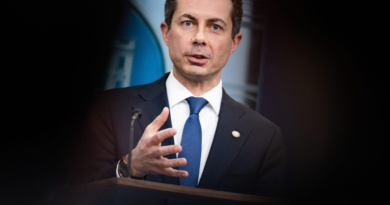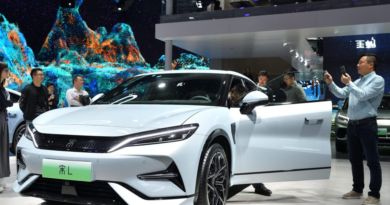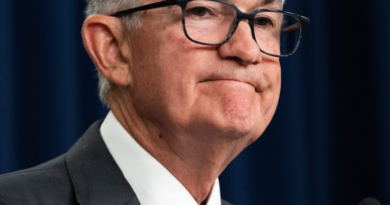Here’s the formula companies like Netflix, Uber, and Spotify will use to capture $2T in growth over the next decade
Think about the last time you listened to music on Spotify, watched a movie on Netflix, hailed a ride on Uber, or ordered food via DoorDash. These companies have millions of digital customers—and billions of interactions with them. They are using the insights from this data to rapidly optimize each customer’s next experience.
In the age of artificial intelligence, competitive advantage is increasingly determined by a company’s ability to deliver personalized experiences at scale. We call this phenomenon the “personalization advantage,” which can be expressed by a simple formula:
P = n × v2
- P represents the competitive advantage of personalization.
- N is the volume of interactions from which the company can learn.
- V is the speed of learning, which has an exponential impact.
The Personalization Advantage formula illustrates why these companies are winning: they have both scale (n) in terms of customer interactions and speed (v) in learning from and acting on these interactions.
Personalization is not just customization—it’s about using customer data to deliver experiences tailored in real-time, evolving with each interaction. Whether it’s a website suggesting products you didn’t know you needed based on prior behavior, a call center agent knowing your shopping history with the company, or a sales associate remembering your preferences, the key is scaling these interactions across millions of customers and constantly learning from them.
Personalization is creating experiences at scale that get fine-tuned with each successive interaction, empowering customers to get what they want better, faster, cheaper, or more easily. The difference lies in the way personalized communications build on everything the company learns about the customer over time, and about how other customers like them behave. In our experience across industries and consumer contexts, this is what makes personalization truly effective. This effectiveness is directly linked to the Personalization Advantage formula. The more interactions a company has (n), and the faster it can learn from them (v), the greater its personalization advantage (P) becomes.
It is enabled by the many different forms of AI available: machine learning, generative AI, agentic AI, and others, often combined together. Business is now effectively at the point where competitive advantage will be based on a company’s ability to relentlessly capture, analyze, and utilize customer data, at a massive scale, with every possible contact—and on how it uses that data to understand, shape, personalize, and optimize each customer’s journey.
Building economies of scale has always been important in business, especially in the physical aspects of competition: supply chains, production, and distribution. However, personalization changes the nature of scale in the customer experience from the mass production of goods to the mass delivery of 1:1 experiences built on accumulated intelligence. Personalization at scale, and the ongoing cycle of experimentation and learning that power it, create a competitive moat that is very hard to replicate. This competitive moat is precisely what our Personalization Advantage formula quantifies.
It’s about scale (n)
Companies such as Alipay, Amazon, Tencent, Flipkart, Netflix, Uber, and Spotify have each amassed over 200 million active users. The sheer size of their digital customer base is enormous. They distill insights about these users not just when they transact, but every time they browse or click in a digital channel. But even non-digital native companies are maximizing the “surface area” they have for gathering and using customer information—like an alarm company understanding how homeowners use their touchpads or B2B distributors tracking the frequency and nature of replenishment orders.
These companies even know the lifetime value of each new active user they add—and invest accordingly. For example, a large food and beverage company we’ve worked with estimated that each 10 million new digital customer relationships would add $1 billion in incremental revenue.
It’s about speed (v)
Ultimately, personalization is about what companies do with the insights about their customers. This is where companies are competing on speed. Speed in getting to know the customer throughout the customer journey, speed in executing based on a trigger about a customer, and speed in constantly improving the experience based on that knowledge. We are big believers in the importance of “time-based competition,” the concept of competing on the basis of speed. In personalization, it is foundational.
The squared term in our formula (v2) emphasizes the outsized impact of speed. Doubling the speed of learning and execution more than doubles the personalization advantage.
It is no coincidence that companies across a wide swath of categories, including home improvement, banking, restaurants, grocery, and apparel have publicly announced that personalized and seamless omnichannel experiences are central to their corporate strategy. These companies understand that maximizing both (n) and (v) in the Personalization Advantage formula is crucial for their success.
By studying hundreds of personalization leaders over the past decade, we have even quantified the size of the personalization advantage pioneering companies are capturing in terms of growth. Across industries, we find that personalization leaders consistently outgrow laggards. In fact, leaders grow top-line revenues 10 points faster per year than laggards. Taken together, we estimate that by the end of this decade, the personalization leaders, on a combined basis, will capture almost $2 trillion in incremental growth.
The basis of competition has shifted—and the prize for those that rethink their business model accordingly is enormous. But here’s the catch. Our research also finds that only 10% of companies qualify as personalization leaders. Many businesses say they are doing personalization but fail to go beyond basic segmented marketing. They end up sending more spam, generating more calls from complaining customers, and frustrating themselves with slower growth than expected. These laggards are failing to optimize both (n) and (v) in the personalization advantage formula, limiting their growth potential.
More must-read commentary published by Fortune:
The opinions expressed in Fortune.com commentary pieces are solely the views of their authors and do not necessarily reflect the opinions and beliefs of Fortune.




